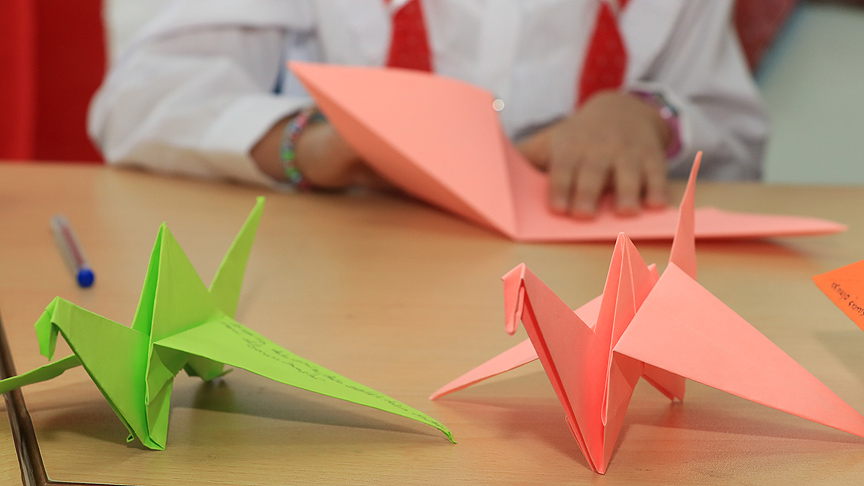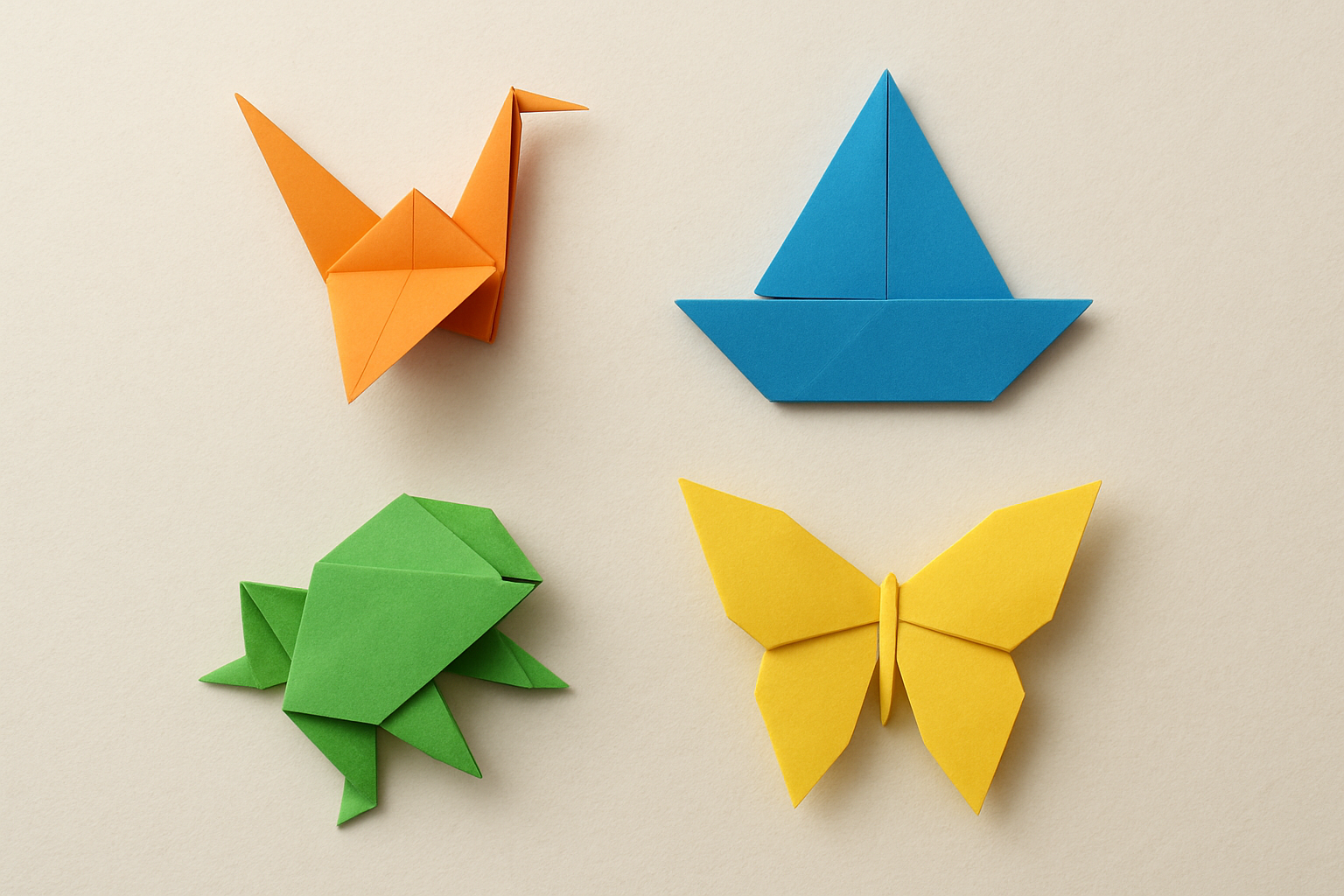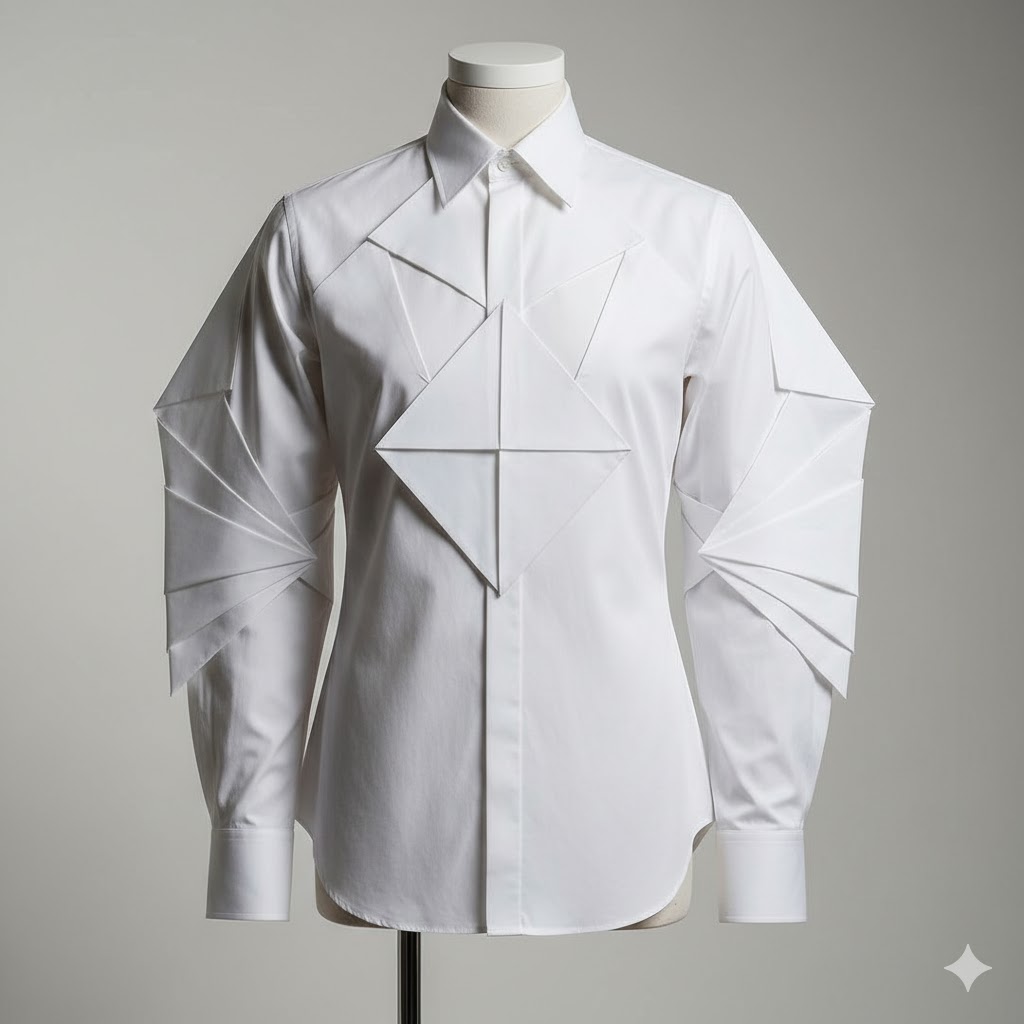Origami is an art form derived from the Japanese words “oru” (to fold) and “kami” (paper), which involves transforming paper into various figures using specific folding techniques without cutting or gluing. Thought to have originated in China and later developed in Japan, origami was initially practiced for ceremonial and ritual purposes. Over time, it evolved into both an aesthetic expression and a method applied in education, mathematics, engineering, and therapy. Today, origami is considered not only an artistic pursuit but also a pedagogical tool supporting cognitive, motor, and emotional development.

Origami (Anadolu Ajansı)
History and Periodic Development
The exact origin of origami is debated; literature suggests that the earliest practices began in China with the invention of paper and were later introduced to Japan through Buddhist monks. Periodic developments recorded in Japan are summarized as follows:【1】
- Heian Period (794–1185): Origami practices became institutionalized for ceremonies and gift decoration, applied in Shinto and Buddhist rituals; historical records document decorative and ritual uses from this period.
- Kamakura Period (1185–1333): Origami became more widespread and diversified through social interactions.【2】
- Muromachi Period (1333–1573): The development of “modern” origami, with folding techniques adopted as an aesthetic element among aristocracy and samurai classes.【3】
- Edo Period (1603–1868): With the start of mass paper production, origami became widespread among the general public, appearing in documents and practices of the time.
- Meiji Period (1868–1912) and Beyond: Origami began to be incorporated into school education and evolved into an educational and artistic activity in modern societies.
Akira Yoshizawa (1911–2005) standardized origami notation symbols (dotted lines, arrows, etc.) and played a key role in the 20th-century modern origami movement. His publications in 1954 and subsequent work laid the foundation for the notation system used today.
Senbazuru – Sadako Sasaki Case: After World War II, Sadako Sasaki attempted to fold 1,000 paper cranes, which later became a symbol of peace. During the war, Sadako was a two-year-old child. Following a family tradition, she began folding 1,000 origami cranes, believing each crane would contribute to her recovery and world peace. Messages of peace were written on the cranes’ wings. Sadako continued folding until the end of her life but completed only 644 cranes. After her death, her friends completed the 1,000 cranes to fulfill her wish and buried them together with Sadako.【4】
Basic Materials and Technical Features
Paper Shapes: The most common origami paper shape is square, although papers of different sizes and proportions may also be used. Some models use banknotes, rectangles, or specially shaped papers. Origami-specific papers (patterned, thin or thick, varying weights) affect folding behavior and aesthetic outcome.
Basic Folds: Fundamental folds include valley and mountain folds, square folds, and petal folds. Intermediate models made from these basic folds are called “bases,” which serve as starting points for many models.
Traditional Rule: Classic origami does not use scissors, glue, or other aids; models are created solely by folding. However, contemporary practices and certain types accept cutting and gluing.

Origami Examples (Generated by Artificial Intelligence.)
Types of Origami and Technical Variants
Origami has diversified into various techniques and forms. Major types include:
- Classical (Traditional) Origami: Single-piece, usually square paper figures such as animals or objects. Examples include cranes, frogs, butterflies, and lilies.
- Modular / Unit Origami: Repeated folding and assembly of identical or similar units to create three-dimensional geometric structures. Suitable for large and complex designs such as spheres and stars.
- Movable Origami: Models incorporating mechanisms that move when pressed or pulled.
- Wet Folding: Technique of slightly moistening paper to shape it with soft, organic curves, popularized by Japanese artist Akira Yoshizawa.
- Simplified Origami: Simple models used in education or for children, involving few folding steps.
- Kirigami: Incorporates cutting as well as folding, producing symmetrical cuts and geometric patterns; used in architectural models and geometric designs.
- Modern / Pop-up / Architectural Origami: Contemporary approaches allowing cutting and gluing, applied in engineering and design; origami principles are used in foldable surfaces and structures in architecture and engineering.
Cognitive and Psychomotor Contributions of Origami
Origami engages both hemispheres of the brain. Right-hand use is associated with left-brain activity, and left-hand use with right-brain activity. Thus, simultaneous use of both hands stimulates both hemispheres. Origami activities enhance attention span, patience, and self-discipline.
During folding, fine motor skills develop, and students learn three-dimensional (spatial) thinking, perspective-taking, and the concretization of abstract concepts. Hand-eye coordination, visual memory, and creativity also improve. Origami strengthens problem-solving and unconventional thinking. Following folding sequences enhances sequencing and planning skills. For children, it supports integrated right-left brain coordination, fostering holistic learning.
Origami Construction (Gaziantep İl Milli Eğitim Müdürlüğü)
Applications of Origami
Origami is not only an artistic expression but also has numerous applications. In education, it serves as a pedagogical tool supporting learning from preschool to higher education, particularly enhancing cognitive, psychomotor, and social development in early childhood and elementary students.
Origami integrates with various learning approaches, including active learning, project-based learning, creative learning, collaborative learning, and brain-based learning. In mathematics and geometry, origami techniques concretize geometric concepts and enhance spatial thinking and problem-solving skills. In architecture and engineering, origami principles are applied in foldable structures, spacecraft, and robotic systems. In fashion and textile design, paper folding principles create three-dimensional forms on fabric and leather surfaces.
Interdisciplinary Applications of Origami
Origami is applied across disciplines for functional and aesthetic purposes. In architecture and engineering, folding patterns shape surfaces and shell structures, control daylight, and create foldable/retractable structures. Folding patterns affect material buckling resistance and structural behavior, providing functional.

Origami-Inspired Furniture (Generated by Artificial Intelligence.)
In textiles and fashion, origami principles create three-dimensional textures on fabric surfaces. Applications consider shape retention, edge fraying prevention, and fiber/fabric construction influencing fold behavior. Techniques include steaming to create permanent three-dimensional folds, origami-inspired lace, natural dyeing, and combining knitting, machine, and hand-sewing with cotton–polyester or wool yarn. Origami techniques also provide volume and texture in clothing and accessory design, producing sculptural “wearable art” with interdisciplinary and cultural references. In art therapy, repetitive folding reduces stress and supports motor rehabilitation by requiring attention and manual skills.

Origami-Inspired Shirt (Generated by Artificial Intelligence.)


